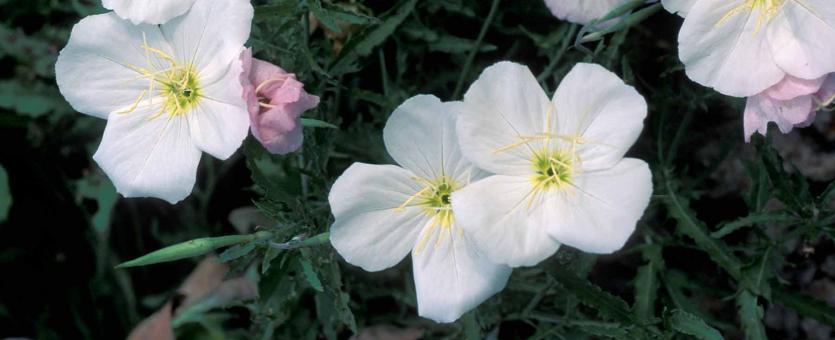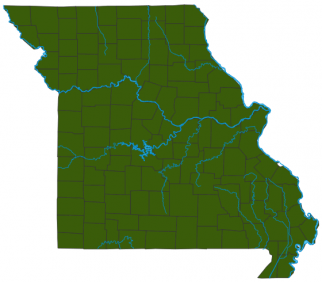Media

Scientific Name
Oenothera speciosa
Family
Onagraceae (evening primroses)
Description
Low-growing perennial, either trailing or upright. Flowers usually single, from upper leaf axils on a long peduncle, 4-petaled, large, pink or white, to 3 inches across, yellow at the center, with darker pink veins. Blooms May–July. Leaves linear to lance-shaped, tapering to a petiolelike base, coarsely toothed.
Size
Height: to 1½ feet.
Where To Find

Statewide. Most common in our southern and eastern counties, rare in northern sections. Cultivated and locally introduced statewide.
Habitat and Conservation
Occurs in fields, prairies, pastures, waste areas, rights-of-way, and other disturbed sites, often covering large areas. A favorite of native plant gardeners. Cultivated garden selections are being developed.
Human Connections
A showy, drought-tolerant native plant for wildflower gardening, it can spread (sometimes aggressively) by roots and seeds, forming dense colonies in sunny locations.
Ecosystem Connections
The flowers are visited by a variety of insects, and the foliage is eaten by several animals ranging from beetles and moth larvae to woodchucks, rabbits, and deer.
Title
Media Gallery
Image

Credit
Anonymous
Right to Use
Image

Title
Similar Species
About Wildflowers, Grasses and Other Nonwoody Plants in Missouri
A very simple way of thinking about the green world is to divide the vascular plants into two groups: woody and nonwoody (or herbaceous). But this is an artificial division; many plant families include some species that are woody and some that are not. The diversity of nonwoody vascular plants is staggering! Think of all the ferns, grasses, sedges, lilies, peas, sunflowers, nightshades, milkweeds, mustards, mints, and mallows — weeds and wildflowers — and many more!





















